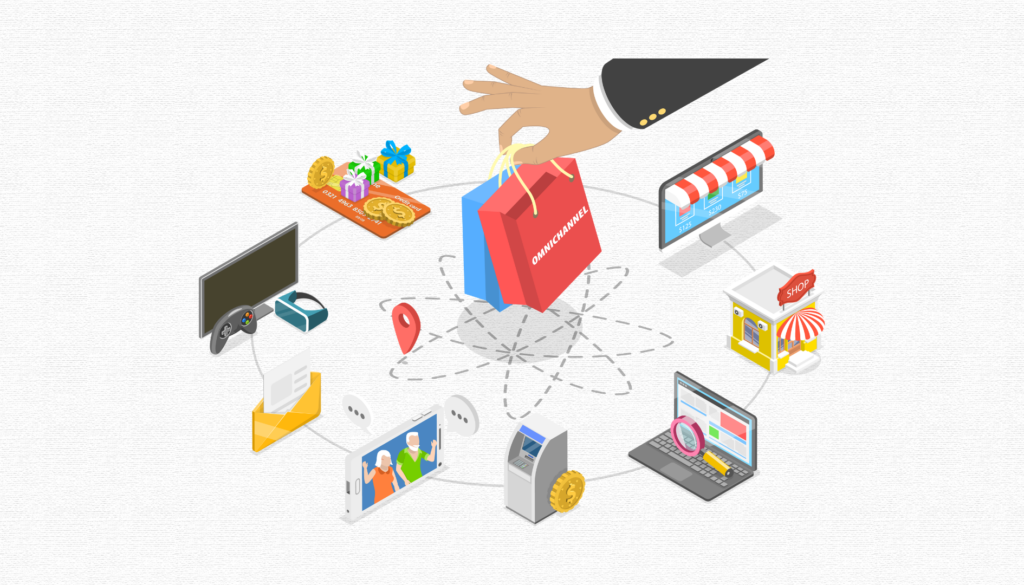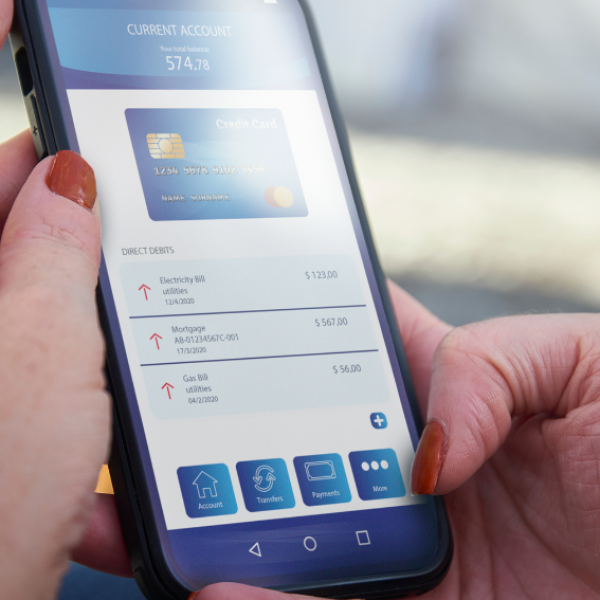A strong customer relationship management (CRM) strategy is essential for any business intending to utilize a CRM platform.
The strategy and the software are interdependent — using the software without a plan is akin to steering a ship without a rudder. Essentially, a CRM strategy dictates how a business employs its CRM software, people, and processes.
In this article, we will discuss the advantages of implementing a CRM strategy and guide you through developing a successful one that effectively complements a comprehensive CRM system.
In This Article
ToggleWhat Is a CRM?

Customer relationship management (CRM) encompasses the practices, strategies, and technologies businesses employ to manage and analyze customer interactions and data throughout the customer lifecycle. The primary aim of CRM is to enhance customer experiences, boost customer retention, and drive business growth.
CRM systems gather customer data from various channels, including a company’s website, telephone, email, live chat, marketing materials, and social media. Utilizing this information allows businesses to make informed decisions about their target audiences and tailor their services to meet customer needs.
It’s essential to understand that CRM extends beyond just technological tools for collecting and managing customer data. It involves adopting a customer-focused philosophy and culture within an organization. This commitment to prioritizing customers influences the development and implementation of CRM strategies, which we will discuss in the next section.
What Is a CRM Strategy and Why Do You Need One?

A CRM strategy is a detailed plan to improve customer relationships, increase revenue, and improve business processes through CRM technology and data-driven insights. By prioritizing customers in your business strategy, you can gain a competitive edge and enhance the efficiency of operations, especially in customer service departments.
Implementing a successful CRM strategy involves carefully monitoring and managing customer data, which helps businesses understand customer behavior and preferences and provide tailored customer experiences to boost efficiency and profit. This strategy is essential for an effective CRM plan, involving three key components:
- The plan involves applying tools and talent to achieve desired outcomes and differentiate your business from competitors.
- Means: These technologies manage customer information, monitor internal performance, and sustain customer relationships. An excellent example of such technology is sales CRM software like HubSpot and Salesforce.
- Skill: This refers to the team members who utilize these tools to handle data and make decisions that drive revenue. This group usually includes sales, marketing, and customer service professionals.
An effective CRM strategy encompasses various elements such as managing customer data, synchronizing sales and marketing efforts, strategizing content, and monitoring its impact.
What Are the Advantages of Implementing a CRM Strategy in a Business?
Implementing a CRM strategy is essential for several key business functions. A well-executed CRM strategy will enable you to:
- Improve cooperation among your sales, marketing, and customer service teams.
- Enhance customer experiences across all interaction points, thereby increasing customer loyalty.
- Monitor the progress of leads and customers through the sales funnel.
- Efficiently identify valuable leads and opportunities, advancing them through the sales pipeline using marketing automation tools.
- Conduct focused marketing campaigns.
- Categorize contacts into precise target groups for marketing.
- Utilize data for sales predictions and to shape your future business plans.
How to Develop an Effective CRM Strategy?

A clear understanding of your business objectives is essential to create a strong CRM strategy. This knowledge helps shape a plan that works well with your existing operations.
Here’s how to establish a CRM strategy that supports your business goals:
1. Collect Initial Data
Initiate your CRM strategy by thoroughly reviewing both external and internal sales-related processes. This should cover a detailed evaluation of your team’s performance, operational methods, market competition, unique selling proposition (USP), and market position. A complete SWOT analysis at this stage can provide valuable insights.
This initial audit will reveal how effectively your resources are utilized and whether you have the necessary means to develop and deploy a new CRM strategy.
2. Outline Your Sales Process and Define Your Audience
Begin by documenting your current sales process. Outline the roles involved, procedures followed, decision points, and data collection methods that define your sales operations. Concurrently, it is essential to identify and define your target audience. Update or create detailed ideal customer profiles (ICPs) and buyer personas, considering their purchasing paths.
These profiles will serve as critical data to fine-tune your CRM strategy.
3. Set Clear Goals
Define the broad objectives of your CRM. Clarifying these goals is crucial, whether it’s to increase Net Promoter Scores (NPS), reduce customer churn, or accelerate the sales process. Evaluate whether your current resources are adequate to meet these goals. Assess if your team is sufficiently large and if you possess the necessary tools, like a robust CRM system, to support your strategy.
With clear goals, specify how you will leverage your CRM to achieve these objectives. Identify key features and functions of your CRM system essential for your strategy and establish protocols for tracking and managing CRM data. Ensure comprehensive training for the entire organization on using the CRM software, focusing on data management and collection practices.
Maintain consistent communication throughout the training phase to improve transparency across teams. Ensure everyone understands their roles and how to use the tool effectively.
4. Segment Audience and Customize Marketing
With your CRM strategy’s logistical setup in place, begin to apply it practically. Use your detailed understanding of buyer personas to segment your audience and create customized marketing strategies for each group. Employ your CRM to oversee and analyze these campaigns.
Utilize your CRM extensively in this phase to access and leverage customer data, helping your sales and marketing teams craft effective, personalized outreach efforts.
5. Automate Customer Interactions
Identify critical points in the customer journey and enhance these interactions with automated processes. Use automation to consistently engage leads by providing information, advice, promotions, and targeted advertisements.
For example, initiate a welcoming email sequence for new leads, guide contacts through promotions, suggest additional products, and deploy targeted ads to re-engage those who did not initially convert. Notify customers when favored items are discounted. Automation targets crucial stages in the customer journey, aiding the progression of leads through your sales funnel.
6. Evaluate Campaign Performance
Monitoring your team’s performance is vital to ensure they meet set objectives and contribute effectively to the CRM strategy. This involves tracking follow-ups, email marketing effectiveness, and customer service quality. Use the reporting and analytics features of your CRM platform for this purpose.
Review CRM metrics regularly and share important findings with stakeholders to ensure your CRM strategy stays aligned with your broader business goals and meets your company’s specific needs. Their feedback may help refine your strategy further.
Best CRM Strategies to Grow Your Business in 2024
Explore these strategies to strengthen your business:
1. Develop an Effective Content Strategy
You might be familiar with this phrase, but the significance of content marketing still bears repeating. Content marketing is more cost effective than traditional marketing methods, costing 62% less yet generating more leads.
Your CRM efforts will be successful if they incorporate content that aligns with customer journeys. It’s crucial to ensure that this content is tailored to your buyer personas and their respective stages in the journey, allowing you to communicate effectively with your contacts at the optimal times.
Providing a steady stream of informative and engaging content can substantially improve your conversion rates. Consider incorporating various content types, such as white papers, guides, videos, and blog posts.
2. Conduct a Business Audit
A business audit is a valuable tool for identifying inefficiencies in current workflows. It helps ensure that operations align more closely with customer needs and enhances customer experiences after implementing a CRM system. The findings from a business audit can lead to more streamlined operations and eliminate unnecessary redundancies, thus boosting the business’s efficiency and productivity. The audit should assess sales, marketing, customer service, and data management processes, identifying areas such as slow customer response times or prolonged sales cycles that need improvement.
The audit should also evaluate the business goals that your CRM strategy aims to support, including increased sales, market share, or customer retention. Your analysis should consider the current operational methods, potential improvements to enhance customer interaction and specific objectives to target. These elements should inform the design and implementation of your CRM system.
3. Identify Your Target Customer Using Buyer Personas
This CRM approach includes creating a buyer persona that reflects your ideal customer’s preferences, dislikes, challenges, and overall print of the customer. Create a buyer persona based on market research and input from your marketing team, aiming for a comprehensive profile that includes demographic and behavioral characteristics, interests, challenges, and goals.
Use these methods to gather information:
- Examine various customer profiles and conduct direct interviews with customers.
- Consult with your sales and customer service teams.
- Host a focus group with customers or clients.
- Send out customer surveys.
- Knowing exactly who your customers are and why they purchase from you is essential for maintaining strong customer relationships and attracting high-quality leads.
- Utilize Google Analytics to gather demographic data on your website visitors.
A clear and detailed buyer profile is crucial for creating a customer-focused business. It helps your teams focus on your customers’ actual needs and expectations. This clear understanding improves customer insights and ensures that your sales and marketing efforts are effectively targeted at suitable leads.
4. Maintain Clean CRM Data
Managing and updating your customer data regularly is essential, even if you collect large amounts. Otherwise, the data may become outdated. Including data deduplication in your CRM strategy is crucial to preserving your CRM database’s integrity and providing excellent service to your customers.
Conduct regular cleanups to keep your CRM system efficient, which helps prevent mistakes or discrepancies. Remove inactive leads that no longer benefit your business. Also, make sure the data in your CRM system is current. This prevents providing outdated information to your customers and avoids potential damage to your reputation.
Regular audits are a solid strategy to ensure your CRM tool functions effectively. Set clear goals for these audits and establish a detailed maintenance schedule. Following these practices will help your CRM database remain accurate and ready for use.
5. Offer Multi-Channel Presence
The traditional sales approach limited to door-to-door interactions and phone calls has evolved. Today’s buyers gather information and make decisions using multiple channels. Sellers must integrate these channels into their CRM strategy to reach the most comprehensive and active audience.
Social media deserves specific attention in this context. It influences over 70% of buying decisions. To leverage this, ensure your organization’s social media profiles are well-maintained and optimized across various platforms. Develop a CRM strategy with a robust social media presence to drive sales effectively.
6. Align All-Integrated Teams
The success of a CRM strategy relies on effective collaboration among your sales, service, and marketing teams. To achieve this, it’s essential to encourage open communication, define shared goals and metrics, and use a CRM system that satisfies the needs of each team.
To efficiently manage the sales pipeline of leads and convert them into customers, it’s crucial to:
- Create a lead management process that outlines the roles and responsibilities of both sales and marketing teams.
- Ensure leads progress smoothly through the sales funnel.
- Provide comprehensive training for your teams to equip them with the necessary skills and knowledge to utilize your CRM system fully.
By coordinating your sales and marketing teams, you can improve processes, enhance communication, increase customer satisfaction, and drive customer engagement.
Software Recommendations to Consider
When selecting CRM software, it’s essential to look at various aspects such as features, pricing, scalability, integration, and user experience. Here are some CRM software suggestions.
1. HubSpot CRM
HubSpot CRM is a user-friendly and affordable option that provides essential CRM functionalities like managing contacts, deals, and tasks. It works well with other HubSpot marketing and sales tools, offering a unified solution for inbound marketing and sales automation. HubSpot CRM is well-suited for small to midsize businesses that need an efficient yet straightforward CRM system.
2. Salesforce
Salesforce is a leading and extensively utilized CRM platform. It provides a wide array of sales, marketing, customer service, and analytics features. The platform is highly customizable and works well with many third-party applications. Although Salesforce may be pricier than some alternatives, its comprehensive features and broad integration capabilities make it a preferred choice for medium to large enterprises.
3. Zoho CRM
Zoho CRM stands out among the various CRM services available today due to its robust features, competitive pricing, and user-friendliness. It is capable and adaptable, fitting the demands of different business sizes and sectors with its extensive features and broad integration options. Additionally, Zoho CRM is accessible for free for up to three users and offers affordable paid plans, positioning it as one of the most cost-effective and scalable CRMs in the industry.
Zoho CRM offers numerous vital features, including marketing and sales automation and product customization. Even the free plan includes some valuable features, which are available without needing a premium account. For example, you can create and distribute customized emails with attachments with a free account.
4. Zendesk Sell
Zendesk Sell is a prominent CRM platform from Zendesk, which also provides a separate help desk platform that can be integrated with your CRM. Zendesk for Service allows you to manage support tickets, develop chatbots, establish a help center for customer use, and communicate with customers through social media, among other features.
A key benefit of this setup is that it consolidates communication channels and customer interactions, simplifying the delivery process of efficient and personalized support.
These are a few CRM software options, with numerous others available today. When looking for CRM solutions, consider your business requirements, budget, and long-term objectives to select the most suitable platform for your organization.
Conclusion
A robust CRM strategy enhances customer relationships, improves business processes, and drives revenue growth. Businesses can leverage customer data to make informed decisions and provide personalized experiences by carefully integrating tools, talent, and technology.
Key steps in developing an effective CRM strategy include conducting a thorough initial audit, defining sales processes and target audiences, setting clear goals, segmenting the audience for customized marketing, automating customer interactions, and regularly evaluating campaign performance. By aligning sales, marketing, and customer service teams and maintaining clean CRM data, businesses can achieve a cohesive and efficient CRM strategy that supports long-term success.
Frequently Asked Questions
What Are the First Steps in Creating a CRM Strategy That Enhances Revenue Growth?
Begin by clearly defining your business goals, making sure they are specific, measurable, and aligned with your organization’s objectives. For example, it aims to improve customer retention or increase sales by a certain percentage. Use customer data to refine these goals based on actual behaviors and patterns.
How Can CRM Data Be Utilized to Understand Better and Serve Customers?
CRM data provides deep insights into customer preferences and behaviors. Analyzing this data allows for personalized interactions, such as customizing communication and remembering essential details like birthdays. This can lead to a more engaged customer base and improved retention rates.
What Are Some Effective Ways to Use CRM for Increasing Customer Engagement and Retention?
To boost engagement and retention, map out the customer journey and understand key touchpoints. Craft targeted marketing strategies that address specific needs and pain points. Automate follow-ups and use data to predict future behaviors, leading to more personalized and timely interactions.
How Does Aligning Sales and Marketing Efforts Impact CRM Effectiveness?
Aligning sales and marketing teams ensures a seamless customer journey. This alignment means both teams work towards the same goals with a clear understanding of ideal customer profiles and journey stages. It enhances CRM effectiveness by ensuring consistent messaging and maximizing the impact of customer interactions, leading to higher conversion rates and customer satisfaction.










